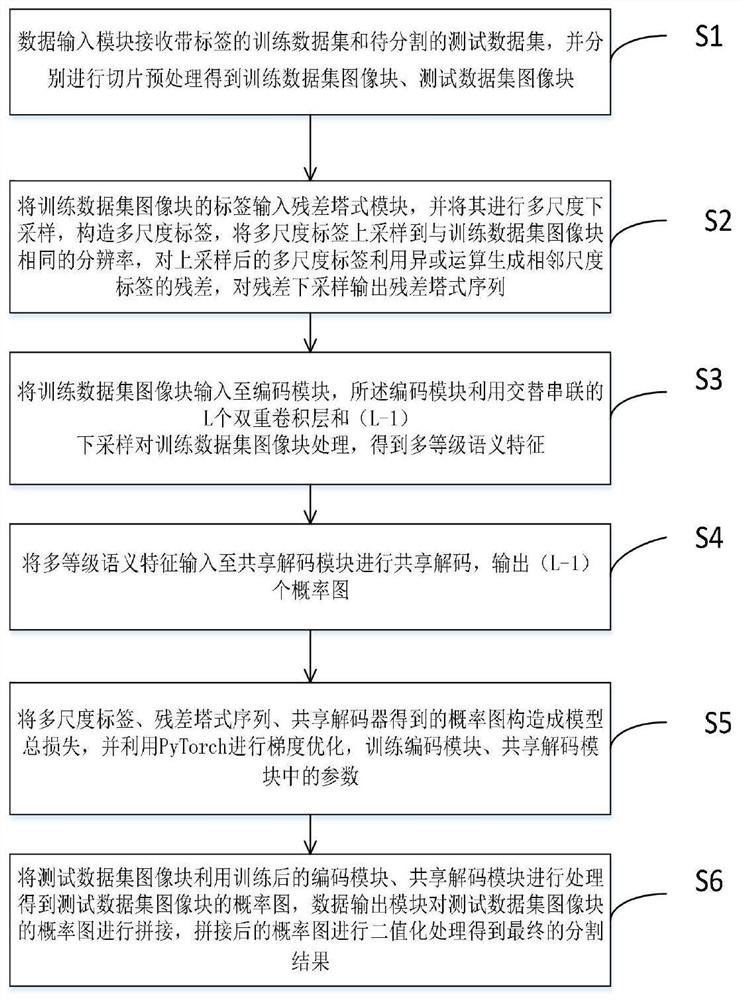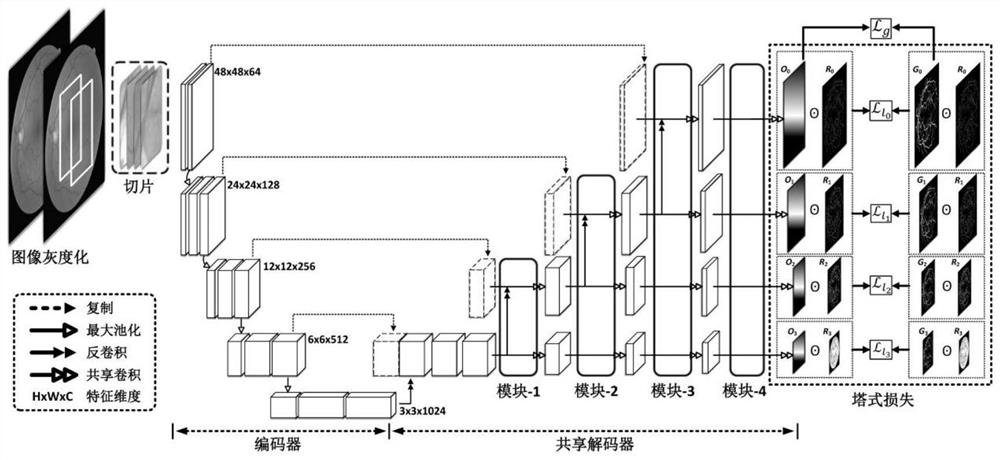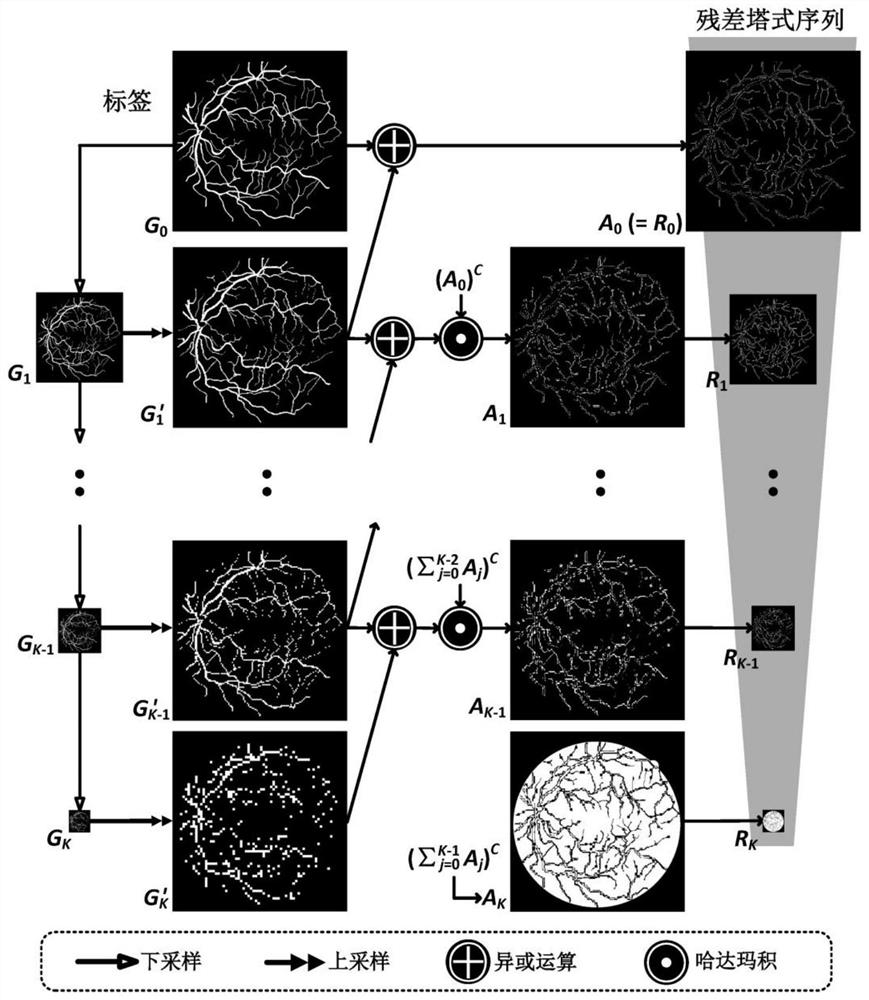Vessel Segmentation Method of Fundus Image Based on Shared Decoder and Residual Tower Structure
A fundus image and tower structure technology, which is applied in the field of image processing, can solve the problems of weak contrast of fundus images and uneven distribution of blood vessel diameters, and achieve the effect of improving the segmentation effect.
- Summary
- Abstract
- Description
- Claims
- Application Information
AI Technical Summary
Problems solved by technology
Method used
Image
Examples
Embodiment 1
[0077] Such as figure 1 As shown, the fundus image blood vessel segmentation method based on the shared decoder and the residual tower structure, the method is implemented by a processing module, and the processing module includes: a data input module, a residual tower module, an encoding module, and a shared decoding module , loss module, data output module, among them, such as figure 2 As shown, the encoding module and the shared decoding module constitute a U-shaped network with a total of 2L layers (in a specific embodiment, L=5, 2L=10), as image 3 Shown is a residual tower diagram, the method includes the following steps:
[0078] S1: The data input module receives the labeled training data set and the test data set to be divided, and performs slice preprocessing respectively to obtain training data set image blocks and test data set image blocks;
[0079] More specifically, step S1 includes:
[0080] S101: Input the two-dimensional RGB fundus image in the training d...
PUM
 Login to View More
Login to View More Abstract
Description
Claims
Application Information
 Login to View More
Login to View More - R&D
- Intellectual Property
- Life Sciences
- Materials
- Tech Scout
- Unparalleled Data Quality
- Higher Quality Content
- 60% Fewer Hallucinations
Browse by: Latest US Patents, China's latest patents, Technical Efficacy Thesaurus, Application Domain, Technology Topic, Popular Technical Reports.
© 2025 PatSnap. All rights reserved.Legal|Privacy policy|Modern Slavery Act Transparency Statement|Sitemap|About US| Contact US: help@patsnap.com



